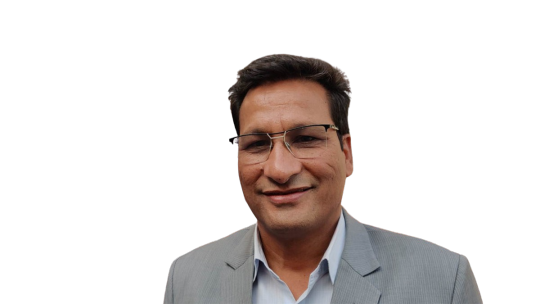#Public-Private Partnerships (PPPs)
Explore tagged Tumblr posts
Text
FG Strengthens Public-Private Partnerships to Boost Water and Sanitation Infrastructure
By Naija247news Staff Abuja, May 19, 2025 The Federal Government has reaffirmed its commitment to promoting Public-Private Partnerships (PPPs) in the water and sanitation sector, as part of President Bola Tinubu’s Renewed Hope Agenda. Professor Joseph Utsev, Minister of Water Resources and Sanitation, made this announcement during a courtesy visit by Dr. Jobson Ewalefoh, Director-General of the…
#Infrastructure Concession Regulatory Commission#National Campaign to End Open Defecation#Nigerian dams assessment#PPP National Summit 2025#Public-Private Partnerships Nigeria#River Basin Development Authorities#Water and Sanitation Nigeria
0 notes
Text
Top 10 Construction Companies in India: Pioneers of Real Estate Excellence
Building the Future: Meet India’s Most Influential Construction Giants
India’s real estate sector is witnessing unprecedented growth, driven by rapid urbanization, government initiatives, and a surge in infrastructure development. From luxury skyscrapers and smart cities to world-class commercial hubs and mega infrastructure projects, India’s top construction companies are redefining urban landscapes with innovation, sustainability, and architectural brilliance.

Whether you're an investor, homebuyer, or industry enthusiast, knowing the key players in India's construction industry can help you make informed decisions. These companies are the backbone of India's real estate transformation, delivering premium residential, commercial, and infrastructure projects that set global benchmarks.
Top 10 Construction Companies in India: Shaping the Skyline
1. Larsen & Toubro (L&T) Construction
🔹 Overview: The undisputed leader in India’s construction industry, L&T is synonymous with engineering excellence and large-scale infrastructure projects. 🔹 Why They Stand Out: Expertise in complex projects such as metros, highways, airports, and skyscrapers. 🔹 Major Projects: Mumbai Trans Harbour Link, Hyderabad Metro, Statue of Unity.
2. Tata Projects
🔹 Overview: Part of the Tata Group, this company specializes in urban infrastructure, high-rise buildings, and smart city developments. 🔹 Why They Stand Out: A legacy of trust and cutting-edge engineering solutions. 🔹 Major Projects: Mumbai Metro Line 4, Noida International Airport, Parliament Building.
3. Shapoorji Pallonji & Co. Ltd.
🔹 Overview: With over 150 years of experience, Shapoorji Pallonji is a name that resonates with excellence in construction and real estate. 🔹 Why They Stand Out: Pioneer in luxury developments, sustainable architecture, and iconic structures. 🔹 Major Projects: The Imperial Towers, Jio World Centre, Cybercity Gurgaon.
4. Godrej Properties
🔹 Overview: A leader in premium residential and commercial real estate, known for sustainable and smart developments. 🔹 Why They Stand Out: Eco-friendly buildings, innovation-driven projects, and exceptional quality. 🔹 Major Projects: Godrej BKC Mumbai, Godrej Woods Noida, Godrej Air NXT Bangalore.
5. DLF Limited
🔹 Overview: The powerhouse of Indian real estate, DLF has developed some of the country’s most luxurious and expansive townships. 🔹 Why They Stand Out: A track record of delivering premium properties and commercial hubs. 🔹 Major Projects: CyberCity Gurgaon, DLF Camellias, DLF One Midtown Delhi.
6. Hindustan Construction Company (HCC)
🔹 Overview: Known for executing complex infrastructure projects, including highways, tunnels, and hydroelectric plants. 🔹 Why They Stand Out: Expertise in high-tech engineering and sustainability-focused projects. 🔹 Major Projects: Bandra-Worli Sea Link, Tehri Dam, Delhi Metro.
7. LODHA Group
🔹 Overview: A name that symbolizes luxury, Lodha has been a game-changer in India’s residential and commercial real estate sector. 🔹 Why They Stand Out: Ultra-luxury developments, international collaborations, and futuristic designs. 🔹 Major Projects: Lodha Altamount, Trump Tower Mumbai, Palava Smart City.
8. Sobha Limited
🔹 Overview: A brand known for delivering high-quality residential properties with impeccable craftsmanship. 🔹 Why They Stand Out: Unparalleled quality control, European design standards, and customer satisfaction. 🔹 Major Projects: Sobha City Gurgaon, Sobha Dream Acres Bangalore, Sobha Hartland Dubai.
9. Prestige Group
🔹 Overview: South India’s most trusted real estate brand, Prestige Group has a diversified portfolio in residential, commercial, and retail. 🔹 Why They Stand Out: Signature luxury properties, award-winning developments, and innovative designs. 🔹 Major Projects: Prestige Shantiniketan, Prestige Falcon City, The Prestige City Sarjapur.
10. Brigade Group
🔹 Overview: A leader in the South Indian real estate market, known for integrated townships and premium developments. 🔹 Why They Stand Out: Sustainable designs, futuristic architecture, and customer-centric approach. 🔹 Major Projects: Brigade Gateway, World Trade Center Bangalore, Brigade Exotica.
Why These Companies Dominate the Indian Construction Industry
🔸 Unmatched Quality & Engineering Excellence – These companies use cutting-edge technology and world-class materials. 🔸 Sustainability & Green Building Initiatives – From solar-powered residences to eco-friendly commercial spaces, sustainability is at the core. 🔸 Iconic & Future-Ready Projects – They have transformed India's urban landscape with futuristic and smart city developments. 🔸 Global Recognition & Partnerships – Many of these companies collaborate with international architects and developers to bring world-class projects to India.
Conclusion: Who Should You Trust for Your Next Investment?
Choosing the right construction company is crucial when buying property or investing in real estate. The Top 10 Construction Companies in India listed above have a proven track record of delivering landmark projects, ensuring customer satisfaction, and maintaining the highest industry standards.
Are you looking for a premium home, a commercial investment, or a mega infrastructure project? Stay ahead in the real estate game by keeping an eye on these industry leaders!
👉 Want to explore premium properties from India’s top developers? Contact us today for expert insights and exclusive investment opportunities!
visit now:90485 90485
#Building Construction#Infrastructure Development#Real Estate Development#Construction Materials#Construction Equipment#Construction Technology#Sustainable Construction#Green Building#Smart Cities#Urban Development#Infrastructure Investment#Public-Private Partnerships (PPPs)#Construction Industry Trends#Construction Industry Challenges#Construction Industry Opportunities#Construction Industry Innovation
0 notes
Text
Building Together: Exploring Public-Private Partnerships (PPP) in India
Bridging the gap between public needs and private sector expertise, Public-Private Partnerships (PPP) are transforming infrastructure development. This blog explores the PPP model, its benefits, and its growing role in India's infrastructure landscape. Discover how PPPs are fostering collaboration to create a more sustainable and efficient future.

0 notes
Text
Powering Sustainable Growth: Regional Conference Focuses on Hydropower Development
A one-day regional conference was held on November 23, 2023, in Kathmandu, Nepal, with a focus on sustainable hydropower development. The conference brought together representatives from government, industry, and academia to discuss strategies for developing hydropower in a way that is sustainable and beneficial to all. In a keynote address, Minister for Energy, Water Resources and Irrigation,…

View On WordPress
#Bizbell#Energy Market#expanding transmission and distribution lines#Ganesh Karki#hydropower development#IHA#International Hydropower Association#IPPAN#maximizing power generation#NHA#Norad#Norwegian Agency for Development Cooperation#Powering Sustainable Growth&039; conference#PPPs#public-private partnerships#Shakti Bahadur Basnet#Sushil Pokharel#Sustainable Development#sustainable growth#sustainable hydropower development#The World Hydropower Congress#USAID
0 notes
Text
who decides the future of hextech?

Hot take: I don't think Hextech functions like a scrappy tech startup at all. I know the Arcane writers have made this comparison themselves, but it doesn't really track with what we see in the show.
It's made pretty clear that Jayce and Viktor have at best limited control over what direction Hextech goes in. In a city that's hostile to and suspicious of magic, they need the continued goodwill of the Council, and the wealthy families who sit on the Council, for their work to continue to exist at all. And that shapes how Hextech develops.
For the first 6-10 years of its existence (however long you think the S1 timeskip is), Hextech consists of one (1) project: the Hexgates. A major piece of international transit infrastructure, utilizing a brand-new technology that no one knew was even possible a few years earlier, and requiring a massive financial outlay for construction years before seeing any profits. Frankly, taking that from the very first shaky proof of concept to a fully functioning piece of infrastructure in less than 10 years is astonishing. This isn't like inventing Facebook; this is equivalent to creating the internet itself.
An infrastructure project on the scale of the Hexgates could be entirely state-funded (and therefore state-controlled, answering to the Council). But from the dialogue and visual storytelling, I think it's reasonable to infer that Hextech functions more like a public-private partnership.
In the modern era, PPPs have come to be associated with privatization and neoliberal capitalism. But funding infrastructure development this way was common in the 19th century too, closer to the time period from which Arcane draws its steampunk-ish inspiration.
So who's picking up the tab? I think it's some combination of government funding from the Council and private funding from Mel Medarda and the Kirammans.
We see one other Kiramman-funded infrastructure project in the show: the Undercity ventilation system.

And, as we see in that case, what may seem like a purely benevolent investment for the good of the city as a whole comes with a very high potential for control. (And where do the Hexgate plans end up at the end of the show? In the Kiramman family vault, accessible only with the Kiramman key.)
The Kiramman family crest is all over Hextech at Progress Day. It's prominent on the stage when Jayce speaks, positioned as equal to his own House.


Cassandra Kiramman introduces Jayce's speech, and Jayce gets trotted around the Kiramman family tent like a show pony beforehand.


The Kiramman crest is also on the box containing the hexgems, which makes me suspect that the facility needed to process the gemstones is either owned or financed by the Kirammans.

Mel's influence is more subtle. There's no Medarda crest on anything associated with Hextech; once you learn a bit about Mel's relationship with her family, that is not surprising. But clearly Mel feels comfortable speaking to other investors on behalf of Hextech, without feeling the need to run it by Jayce or Viktor first.


I think this exchange implies that (1) getting additional, outside investors is something new that they haven't done to finance earlier rounds of Hextech development, and (2) Mel is planning ahead in case the Council doesn't like the direction Hextech is going next and they need to secure additional funding.
I wouldn't be surprised if Mel was the one who steered them toward shipping and long-distance trade as a marketable use for Hextech in the first place, something many of the councillors seem to have an economic stake in.
Throughout this whole scene with Jayce and Mel, the Hexgate model sitting on her desk is very prominent. It's the first thing we see in the scene; the color and lighting make it stand out; and it appears in the frame in multiple shots. It's the thing that's always there between them.




Mel and Cassandra Kiramman are also councilors, and along with Heimerdinger they are Hextech's main allies on the Council--3 out of 7. Jayce and Viktor really can't afford to piss off any of them...which gets complicated when they want opposite things.
At the time of Progress Day, Hextech is at a turning point.




This conversation implies that they have not had a lot of freedom to develop and build whatever they wanted in the years during the timeskip. It's an interesting reversal of the dynamic we saw from them in 1.02 and 1.03. This time Jayce is the one forging ahead, confident they can get what they want, while Viktor is the one pointing out obstacles. (This is also the first time we see Viktor's face post-timeskip and register how much sicker he's become, which...oof.)
Regardless of how much they talk about "bringing magic to the people," I think it's notable that both their little spiels focus on how these inventions would increase worker productivity. This is a presentation designed for people who are thinking about their bottom line. And they seem to expect that any new developments with Hextech will have to be given Council approval before they can proceed.


(I think all of this puts the Hexcore in a slightly different light, too. It's quite possibly the first Hextech device since Jayce's original prototype that they've built without thinking about the pitch meeting. It's not a single-purpose object with an immediate, obvious use. In the beginning, it seems to recapture some of that original sense of wonder and discovery. And Viktor built it. I can see how he would be protective of his creation even before things Got Weird with it.)
And then, of course, everything goes off the rails. The gemstone gets stolen; Jayce gets pulled onto the Council. And after that point, every new Hextech object that Jayce makes is a weapon.
Jayce and Viktor's arc can be read as a story about the hubris of scientists thinking they can control forces they don't understand and anticipate every possible consequence, or a story about their naivete in thinking they could keep their research somehow above politics in a world full of conflict. And it's not not about those things. But it can also be read as a story about how discovery, creativity, and people's natural altruistic impulses get constrained by capitalism, and how often innovation is only valued if it can be made to serve war or profit.
(As for who controls the future of Hextech after the end of the show? With Viktor, Jayce, Mel and Heimerdinger all gone from Piltover...Caitlyn, probably. A detail I would love to see someone use in a fic.)
110 notes
·
View notes
Text
Sierra Leone's Blood-Diamond Hydra
youtube
ROLE IN SCOTLAND
The Standing Council of Scottish Chiefs (SCSC) is an organisation that represents many prominent clan chiefs and Chiefs of the Name and Arms in Scotland. It claims to be the primary and most authoritative source of information on the Scottish clan system. In the Commonwealth of Nations, a high commissioner is the senior diplomat, generally ranking as an ambassador, in charge of the diplomatic mission of one Commonwealth government to another. Instead of an embassy, the diplomatic mission is generally called a high commission.[1] Chief of Mission is also the title of the team manager of a national delegation in major international multi-discipline sporting events, such as the Olympic Games.[3] The Royal Scots Navy (or Old Scots Navy) was the navy of the Kingdom of Scotland from its origins in the Middle Ages until its merger with the Kingdom of England's Royal Navy per the Acts of Union 1707. There are mentions in Medieval records of fleets commanded by Scottish kings in the twelfth and thirteenth centuries. King Robert I (1274–1329, r. 1306–1329) developed naval power to counter the English in the Wars of Independence (1296–1328).
AUTHENTIC MOVEMENT DIAPREMEIR [Diamond and Premier]
Of Undisputed Origin.
Periodic Table Metallurgy Cultivator with Artisanal Primitive Anthropology, Nationalist, Art Intellect with Athletic Ability, Riverbanks Farmland, Real Estate Investment Trust and Real Estate Brokerage Trust Account, Pool-Live Monopoly Turf Accountant Board Game Tournament, Rugby and Kickboxing, Eagle Conservation, Painting, Polyrhythm Syncopated Progressive Drum Loops with Rhythm Flag (Bass Clef; Anacrusis; Staccato and Legato; Barcarolle; Tonic and Dominant; Triple G Positions; Riff Melody, Imitation Vocals, and Drum & Bass Licks), and (Diamond; Decapods; Mollusk; Opium; Deliriants; Tobacco; Coffee; and Arms) Black Market
(Artisanal Primitive King) Pedagogy: King Anthropology; Mixing a form of Royalty Title with Anthropology. CRAFT SOCIETY Sensory Processing Anthropology Artisan Primitive: Sensory Play of the Sensory Ethnography, Sensory Modulits CNS; Artisanal Plantation Metallurgy Cash Crops Spectrum; Evolution; Savagery, Emerging Markets, Civilianization, ECONOMICS OF FINANCIAL MARKETS; Economic Science (Supply-side Economics), Economic Geography (Artisanal Plantation), Economic Mathematics (CFD Probabilistic Model Exchange), Microeconomics (Contract Theory, Purchasing Theory, Portfolio Theory, Producer Price Index, Profit Sharing Plan, Lipstick Effect, Opportunity Cost, Private Limited Partnership, Public-Private Sectors, Pyramid Marketing, Minor Purchase Group) for Sensory Geography (5 Senses City); Prenatal Hormones with Fetus Alcohol Consumption for Sensory Overload Savant;
Randlords Agronomics Spirit: Economic Expansion, Economic Bubble, Supply-Side Economics, FX Counter Trading Party Interdependence Economics, Intermodal Port Economics, Horizontal Integration, Soil Chemistry;
Meturnomics: Periodic Table Element Manufacturing, Covalent Bonds Fertilizer with Soil Chemistry Ex. Carbon Compounds, Covalent Bonds Fertilizer with Soil Chemistry, Chandelier Tree for Bontonical Indicator; Diamond Vowels: A (Accessories Auctions), E (Exchange Probabilistic Model), I (Sensual Insurance), O (Open-pit Mines), U (Unanimous Laser Cutters and Laser Pressure); Metal Exchange Probabilistic Model for Derivatives CFDS; Crystalline Structure of Elements of the Periodic Table Covalent Bonds Fertilizer, The oxide mineral class includes those minerals in which the oxide anion (O2−) is bonded to one or more metal alloys. I treat my Fertilizer as a Mixing Agent.
AgCurrency: Economic Table, Barter Economics, NIRP Supply-side Fixed Rate Pegged De Facto; AgIndex: Commodities Portfolio Management; Agronomics CFDS//Option Exchange (Credit Spread Options, FX-CFD Interest Rates Beta-Arbitrage w/PPP and Supply-side Economics Currency Pair)
SIERRA PROCESS CERTIFICATE FOR EXPORT AND MARKET VOLUME
Open-pit Mines Economic Geography
Banking System and Probabilistic Model Exchange
Intermodal Cargo Countyline Trafficking Infrastructure
De facto SLL/SDM FX Counter Trading Party for Diamond And Oil CFD; SLL 5% AND SDM -0.5% Interest Rates Contract for Difference.
Diamond enhancements are specific treatments, performed on natural diamonds (usually those already cut and polished into gems), which are designed to improve the visual gemological characteristics of the diamond in one or more ways. These include clarity treatments such as laser drilling to remove black carbon inclusions, fracture filling to make small internal cracks less visible, color irradiation and annealing treatments to make yellow and brown diamonds a vibrant fancy color such as vivid yellow, blue, or pink.
the crystalline structures of the elements of the periodic table which have been produced in bulk at STP and at their melting point (while still solid) and predictions of the crystalline structures of the rest of the elements.
A brokerage account is an investment account held at a licensed brokerage firm. An investor deposits funds into their brokerage account, and the broker executes orders for investments such as stocks, bonds, mutual funds, and exchange-traded funds (ETFs) on behalf of the investor.
The Argyll Arcade is a shopping arcade in the Scottish city of Glasgow . In 1970, the building was listed as an individual monument in the Scottish monument register in the highest monument category A. [ 1 ] Buchanan Street is one of the busiest shopping streets in Glasgow , Scotland's largest city . It forms the central section of Glasgow's famous shopping district and offers a more upmarket selection of shops than the adjacent streets, Argyle Street and Sauchiehall Street. Buchanan Street is one of the busiest shopping streets in Glasgow , Scotland's largest city . It forms the central section of Glasgow's famous shopping district and offers a more upmarket selection of shops than the adjacent streets, Argyle Street and Sauchiehall Street. Glasgow is considered a "working class city" in contrast to the Scottish capital Edinburgh . There is a 12th century cathedral and four universities, the University of Glasgow , University of Strathclyde , Glasgow Caledonian University and the University of the West of Scotland , as well as the Glasgow School of Art and the Royal Conservatoire of Scotland (formerly the Royal Scottish Academy of Music and Drama ).
CURRENCY, OIL, & GOLD COMMODITIES CANDLESTICK CHARTS
Swing Trading: Use mt4/mt5 With Heiken Ashi Charts, Setting at 14 or 21 Momentum Indicator above 0 as Divergence Oscillator and Volume Spread Analysis as Reversal Oscillator and Trade when bullish candlesticks above 200 exponential moving average and/or 20 exponential moving average (EMA) on H1 (Hourly) Time Frame; use H4 (4 Hours) and D1 (1 Day) as reference.
MARINE MILITARY SCIENCE
Pythagorean Military
A + B = C
Commando + Brigade = 12 Teams of 500
Tactical Thinking + Operational Thinking = Mission Intelligence ex. Amphibious or Shore; Mountain or Jungle Warfare
Aquatic Training + Land Skills = Marine Black Ops
Carbines + Machete = CQB and Melee
Divine language, the language of the gods, or, in monotheism, the language of God (or angels), is the concept of a mystical or divine proto-language, which predates and supersedes human speech. Fon was a highly militaristic language constantly organised for warfare; it captured captives during wars and raids against neighboring societies. Tactics such as covering fire, frontal attacks and flanking movements were used in the warfare of Fon. The military of Fon was divided into two units: the right and the left. The right was controlled by the migan and the left was controlled by the mehu. There is an effort to create a machine translator for Fon (to and from French), by Bonaventure Dossou (from Benin) and Chris Emezue (from Nigeria).[14] Their project is called FFR.[15] It uses phrases from Jehovah's Witnesses sermons as well as other biblical phrases as the research corpus to train a Natural Language Processing (NLP) neural net model.[16] A brigade is a major tactical military formation that typically comprises three to six battalions plus supporting elements. It is roughly equivalent to an enlarged or reinforced regiment. Two or more brigades may constitute a division. Brigades formed into divisions are usually infantry or armored (sometimes referred to as combined arms brigades). In addition to combat units, they may include combat support units or sub-units, such as artillery and engineers, and logistic units. Historically, such brigades have been called brigade-groups. On operations, a brigade may comprise both organic elements and attached elements, including some temporarily attached for a specific task. Close-quarters battle (CQB), also called close-quarters combat (CQC), is a close combat situation between multiple combatants involving ranged (typically firearm-based) or melee combat. Special operations or special ops are military activities conducted, according to NATO, by "specially designated, organized, selected, trained, and equipped forces using unconventional techniques and modes of employment."[1] Special operations may include reconnaissance, unconventional warfare, and counterterrorism, and are typically conducted by small groups of highly trained personnel, emphasizing sufficiency, stealth, speed, and tactical coordination, commonly known as special forces. A black operation (black op for short) is a covert operation which is done by a government or military. Black operations are secret and whoever does them does not admit that they ever happened.[1] There are differences between black operations and ones which are just secret. The main difference is that a black operation often uses deception. This deception might be not telling anybody who did the operation. It might also be blaming the operation on someone else ("false flag" operations).[2][3] Marines (or naval infantry) are military personnel generally trained to operate on both land and sea, with a particular focus on amphibious warfare. Historically, the main tasks undertaken by marines have included raiding ashore (often in support of naval objectives) and the boarding of vessels during ship-to-ship combat or capture of prize ships. Suppressive Forts Defense and Partisan Raid for Sabotage Offense.
Spiritual warfare is the Christian concept of fighting against the work of preternatural evil forces. It is based on the belief in evil spirits, or demons, that are said to intervene in human affairs in various ways.[1]
Harmony and Contrast Guerilla Warfare: Raiding, also known as depredation, is a military tactic or operational warfare "smash and grab" mission which has a specific purpose. Raiders do not capture and hold a location, but quickly retreat to a previous defended position before enemy forces can respond in a coordinated manner or formulate a counter-attack. Raiders must travel swiftly and are generally too lightly equipped and supported to be able to hold ground. A raiding group may consist of combatants specially trained in this tactic, such as commandos, or as a special mission assigned to any regular troops.[1] Raids are often a standard tactic in irregular warfare, employed by warriors, guerrilla fighters or other irregular military forces. A partisan is a member of a domestic irregular military force formed to oppose control of an area by a foreign power or by an army of occupation by some kind of insurgent activity. Sabotage is a deliberate action aimed at weakening a polity, government, effort, or organization through subversion, obstruction, demoralization, destabilization, division, disruption, or destruction. One who engages in sabotage is a saboteur. Saboteurs typically try to conceal their identities because of the consequences of their actions and to avoid invoking legal and organizational requirements for addressing sabotage. (Sabotage Partisan Raid)
Harmony and Contrast Siege Warfare: A siege (Latin: sedere, lit. 'to sit')[1] is a military blockade of a city, or fortress, with the intent of conquering by attrition, or by well-prepared assault. Siege warfare (also called siegecrafts or poliorcetics) is a form of constant, low-intensity conflict characterized by one party holding a strong, static, defensive position. Consequently, an opportunity for negotiation between combatants is common, as proximity and fluctuating advantage can encourage diplomacy. A fortification (also called a fort, fortress, fastness, or stronghold) is a military construction designed for the defense of territories in warfare, and is used to establish rule in a region during peacetime. The term is derived from Latin fortis ("strong") and facere ("to make").[1] In military science, suppressive fire is "fire that degrades the performance of an enemy force below the level needed to fulfill its mission"[clarification needed]. When used to protect exposed friendly troops advancing on the battlefield, it is commonly called covering fire. Suppression is usually only effective for the duration of the fire.[1] It is one of three types of fire support, which is defined by NATO as "the application of fire, coordinated with the maneuver of forces, to destroy, neutralise or suppress the enemy". (Forts and Suppressive fire)
Operational And Tactical Thinking: Operational intelligence is real time, or near real-time intelligence, often derived from technical means, and delivered to ground troops engaged in activity against the adversary. Operational intelligence is immediate, and has a short time to live (TTL). Tactical Thinking of or relating to tactics, especially the placement of military or naval forces in battle or at the front line of a battle. characterized by skillful tactics or adroit maneuvering or procedure, especially of military or naval forces: tactical movements.
SOCIO-ACCENT
County Speech Jargon
Glottal Stops Consonants
Ex. T is Eigh'een, G is Jar'on, L Ho'y; How are you amon' us Ho'y Shi'
Made up Verbs, Nouns, and Adjectives with SCHWA Endings Endings: ER=SCHWA
Pover: Do you want a Pover to the Chin!
SOCIO-CULTIVATION MODEL
Pigou Effect, Corporate Tax Havens, Capital Gains Tax Havens, Private-Public Sectors, Joint Venture Plantations, Market Extension Mergers with Business Incubators and Enterprise Foundation Holding Company, Subsidiaries, and Horizontal Integration.
SOCIO-COLONIZATION
Bilingual Sensory Play TV Channel
Queen's English Immersion Liberal Arts Course
DRUGS AND CRIME NEXUS
First, the ‘psychopharmacological model’ argues that certain drugs may produce irrational, excitable, or violent behaviour in an individual. Many benzodiazepines are also likely to produce dependency in a regular user (Marshall & Longnecker 1992; Rall, 1992), and withdrawal from benzodiazepines has been associated with severe mood swings, irritability and personality changes (Marshall & Longnecker, 1992; Rall, 1992). In addition, use of benzodiazepines has been implicated in disinhibited behaviour (Bonn & Bonn 1998; Dobbin 2001; Rall 1992). Further, Makkai (2002) and Goldstein (1985) reported that some offenders use certain drugs purposely to reduce their fear of committing a crime, while Dobbin (2001) reported that benzodiazepine intoxication can produce feelings of over-confidence and invincibility in users, causing them to commit offences they would not normally undertake. Goldstein (1985) suggests that the incidence of psychopharmacological violence is impossible to assess, because such incidents may occur anywhere (including in the home, workplace, on the street and so on) and often go unreported, and also because when cases are reported the psychopharmacological state of the offender is often not officially recorded. The second model of the link between drugs and violence, the ‘economic compulsive’ model, argues that some drug users commit violent crimes, such as armed robberies, to support an expensive drug habit (Goldstein 1985), consistent with the enslavement model of property crime (Goode 1997). Theoretically, as illicit drugs are expensive and may be typified by compulsive patterns of use, the primary motivation of the user is to obtain money to purchase them. Thus, the violence is not usually intended, but occurs as a result of the situation where a property crime is being committed, such as the offender’s nervousness, the victim’s reaction, use of weapons by perpetrator or victim, or intercession by bystanders (Goldstein 1985). Studies have found that most 6 Benzodiazepine and pharmaceutical opiod misuse and their relationship to crime heroin users will avoid violent acquisitive crime if viable non-violent alternatives exist, because violence is more dangerous and also potentially increases the penalty if caught, and/or because perpetrators may lack a tendency towards violent behaviour (Goldstein 1985). In relation to violent crime, three models have also been put forward that may suggest implications for evaluating potential interventions aimed at reducing drug-related crime.
Abstract
Personality disorders and particularly antisocial personality disorders (APD) are quite frequent in opioid-dependent subjects. They show various personality traits: high neuroticism, high impulsivity, higher extraversion than the general population. Previous studies have reported that some but not all personality traits improved with treatment. In a previous study, we found a low rate of APD in a French population of opioid-dependent subjects. For this reason, we evaluated personality traits at intake and during maintenance treatment with methadone. Methods - The form A of the Eysenck Personality Inventory (EPI) was given to opioid addicts at intake and after 6 and 12 months of methadone treatment. Results - 134 subjects (96 males and 38 females) took the test at intake, 60 completed 12 months of treatment. After 12 months, the EPI Neuroticism (N) and the Extraversion-introversion (E) scale scores decreased significantly. The N score improved in the first 6 months, while the E score improved only during the second 6 months of treatment. Compared to a reference group of French normal controls, male and female opioid addicts showed high N and E scores. Demographic data and EPI scores of patients who stayed in treatment for 12 months did not differ significantly from those of dropouts (n=23). Patients with a history of suicide attempts (SA) started to use heroin at an earlier age and they showed a higher E score and a tendency for a higher N score at intake. Discussion - The two personality dimensions of the EPI changed during MMT, and the N score converged towards the score of normal controls. Opioid addicts differ from normal controls mostly in their N score. The EPI did not help to differentiate 12-month completers from dropouts. Higher E scores in patients with an SA history might reflect a higher impulsivity, which has been linked to suicidality in other patient groups.
Personality
So called 'benzo binges' have been associated with shoplifting and other crimes. Patients may also experience paradoxical excitement with increased anxiety, insomnia, talkativeness, restlessness, mania, and occasionally rage and violent behaviour (known as the 'Rambo effect').
High doses are also associated with a puzzling complication known as the “Rambo effect.” This unusual side effect occurs when a Xanax user begins displaying behaviors that are very unlike them. This might include aggression, promiscuity, or theft. It’s not clear why some people react this way or how to predict if it will happen to you.
Despite the fully legal status of several common deliriant plants and OTC medicines, deliriants are largely unpopular as recreational drugs due to the severe dysphoria, uncomfortable and generally damaging cognitive and physical effects, as well as the unpleasant nature of the hallucinations.
Deliriants are a subclass of hallucinogen. The term was coined in the early 1980s to distinguish these drugs from psychedelics such as LSD and dissociatives such as ketamine, due to their primary effect of causing delirium, as opposed to the more lucid (i.e. rational thought is preserved better, including the skepticism about the hallucinations) and less disturbed states produced by other types of hallucinogens.[1] The term generally refers to anticholinergic drugs, which are substances that inhibit the function of the neurotransmitter acetylcholine.[1]
The systematic name (IUPAC) is [1R-(exo,exo)] -3-(benzoyloxy)-8-methyl-8-azabicyclo[3.2. 1]octane-2-carboxylic acid methyl ester. Cocaine is the methyl ester of benzoylecgonine and is also known as 3β-hydroxy-1αH,5α-H-tropane-2β-carboxylic acid methyl ester benzoate.
Specifically, the carbonyl oxygens and amine group on cocaine, on average, form ∼5 bonds with the water molecules in the surrounding solvent, and the top 30% of water molecules within 4 Å of cocaine are localized in the cavity formed by an internal hydrogen bond within the cocaine molecule.
£10 re-up and Marked up Pills BYOB.
Ex. Smurf the £10 re-up with $40 a pill for Molly Water.
Pill Presser Kids.
NMDA, ACETYLCHOLINE, AND WATER SOLUBLE PROTEIN.
💎💎💎💎💎💎💎💎💎💎💎💎💎💎💎💎💎💎🏴🏴🏴🏴🏴🏴🏴🏴🏴🏴🏴🏴🏴🏴🏴🏴🏴🏴🇸🇱🇸🇱🇸🇱🇸🇱🇸🇱🇸🇱🇸🇱🇸🇱🇸🇱🇸🇱🇸🇱🇸🇱🇸🇱🇸🇱🇸🇱🇸🇱🇸🇱🇸🇱💸💸💸💸💸💸💸💸💸💸💸💸💸💸💸💸💸💸🦀🦀🦀🦀🦀🦀🦀🦀🦀🦀🦀🦀🦀🦀🦀🦀🦀🦀👑👑👑👑👑👑👑👑👑👑👑👑👑👑👑👑👑👑
ST. THOMAS MYR. OBASI
11 notes
·
View notes
Text
Brazil's sanitation sector gears up for expansion with billions in investment
Regulatory framework boosts legal security as auctions in 2025 and 2026 aim to attract R$95bn

Abcon Sindcon, the trade association representing Brazilian water and sewage utilities, projects that 26 sanitation assets could go to auction in 2025, unlocking R$70 billion in investments. Most projects are small to mid-sized, but major assets include the Pará water and sewage concession, scheduled for auction on April 11, which alone could drive R$18.5 billion in investments.
Other large auctions set for 2025 include the Pernambuco and Rondônia concessions, with estimated investments of R$18.2 billion and R$5.8 billion, respectively. The public-private partnership (PPP) for Paraíba’s sewage services is expected to attract R$5.7 billion. These figures are based on data from the Brazilian Development Bank (BNDES), which is structuring the projects. Also on Abcon’s list is Goiás’s sewage service PPP, projected at R$6.6 billion, with the auction expected in 2026.
For next year, the BNDES also anticipates the Maranhão sanitation concession, the Rio Grande do Norte sewage PPP, and Copanor’s water and sewage PPP, serving northern and northeastern Minas Gerais. Combined, these contracts could generate R$25.4 billion in investments. In total, new funds mobilized through water and sewage service auctions in 2025 and 2026 could surpass R$95 billion.
Financial players and industry experts believe the market has the capital and appetite to absorb this wave of projects. “The market has embraced the sanitation sector, and financial support won’t be an issue,” said Rogério Yamashita, head of infrastructure project finance at Itaú BBA. Over the past three years, the bank has arranged R$45 billion in financing for sanitation projects through national and multilateral development banks, private financial markets, and capital markets.
Continue reading.
#brazil#brazilian politics#politics#economy#sanitation#image description in alt#mod nise da silveira
6 notes
·
View notes
Text

New Murabba Case Study: Urban Transformation in Riyadh
Overview: The New Murabba Project, led by Saudi Arabia's Public Investment Fund (PIF), is a key part of Vision 2030, transforming Riyadh into a world-leading city with a massive modern downtown.
Key Components:
Mukaab Landmark:
Design: A 400-meter cube structure housing a museum, university, theatre, and over 80 entertainment venues.
Urban Planning:
Development: 104,000 residential units, 9,000 hotel rooms, and 980,000 square meters of retail space.
Green Spaces: A 3.2 million square meter park.
Transportation: Integrated public transport network.
Sustainability and Innovation:
Energy Efficiency: Sustainable building practices and energy-efficient technologies.
Smart City Features: Implementation of smart infrastructure.
Public–Private Partnerships (PPPs): The project highlights the role of PPPs in
urban transformation:
Investment and Funding:
Public Investment Fund: Primary investor attracting private sector investments.
Collaboration with International Firms:
Design and Construction: Partnerships with global firms for world-class standards.
Technology: Integrating smart city solutions.
Economic Impact:
Job Creation: Significant job opportunities during construction and ongoing operations.
Tourism and Commerce: Boosting the local economy and Riyadh's global standing.
Challenges:
- Project Management: Ensuring timely completion with robust management.
- Sustainability: Balancing urbanization with environmental impact.
- Community Engagement: Involving local communities and stakeholders.
Conclusion: The New Murabba Project exemplifies the power of PPPs in urban development, integrating cultural, commercial, and residential elements with sustainability and technology to create a vibrant, future-ready urban center in Riyadh.
#KhalidAlbeshri #خالدالبشري
#advertising#artificial intelligence#autos#business#developers & startups#edtech#education#finance#futurism#marketing
15 notes
·
View notes
Text
Collaborative Dialogue for Rajasthan’s Development: Leaders and Industry Stakeholders Shape 2025–26 Budget Vision — Col Rajyavardhan Rathore

In a dynamic and forward-thinking initiative, Colonel Rajyavardhan Rathore, a key minister in the Rajasthan government, convened a high-level dialogue with prominent leaders and industry stakeholders to shape the 2025–26 budget vision. The focus of this discussion was to align economic priorities with the aspirations of Rajasthan’s citizens, fostering sustainable growth and holistic development.
Key Highlights of the Collaborative Dialogue
Public-Private Partnerships (PPP): The dialogue emphasized leveraging PPP models to accelerate infrastructure projects, including roads, smart cities, and renewable energy.
Empowering Rural Rajasthan: Industry leaders highlighted the importance of initiatives like agritech solutions, irrigation systems, and rural entrepreneurship programs to boost the rural economy.
Focus on Youth and Education: To harness the demographic dividend, suggestions included:
Expanding vocational training centers.
Introducing new-age technologies like AI and robotics in educational institutions.
Enhanced funding for state-level sports programs to identify and nurture talent.
Boosting Industrial Growth: The dialogue identified opportunities to position Rajasthan as a hub for green energy, tourism, and stone craftsmanship through targeted policies and incentives.
Health and Social Welfare: Stakeholders recommended budgetary allocations for expanding health infrastructure, ensuring equitable access to healthcare in rural areas, and addressing issues like malnutrition and women’s health.
Col Rajyavardhan Rathore’s Vision
Addressing the gathering, Col Rathore said:
“The 2025–26 budget is not just about numbers; it is a blueprint for a vibrant, self-reliant Rajasthan. By working together, we can ensure every village, youth, and entrepreneur benefits from these developmental initiatives. This collaborative dialogue marks a significant step towards realizing the vision of a developed Rajasthan in alignment with India’s growth story.”
Way Forward
The insights from this dialogue will be integrated into the state’s budget framework, ensuring it is inclusive, futuristic, and impactful. Stakeholders committed to continuous engagement to track the progress of initiatives and address emerging challenges.
Together, Rajasthan marches towards a brighter and prosperous future.
#विकसित_राजस्थान #विकसित_भारत
4 notes
·
View notes
Text
Prosperous Rajasthan, Prosperity in Every Home: Colonel Rajyavardhan Rathore’s Vision for Growth
Colonel Rajyavardhan Rathore, a distinguished leader and visionary, has consistently advocated for the holistic development of Rajasthan. Under his leadership and the guidance of the double-engine BJP government, Rajasthan is making remarkable strides toward progress, with a vision of prosperity reaching every home across the state.
This initiative aims to ensure equitable growth, foster innovation, and elevate the quality of life for every Rajasthani citizen.
Key Pillars of Prosperity in Rajasthan
1. Economic Growth and Industrial Development
Rajasthan is evolving into an industrial powerhouse by:
Promoting investments through initiatives like the Rising Rajasthan Global Investment Summit.
Encouraging public-private partnerships (PPPs) in infrastructure and industry.
Developing special economic zones (SEZs) for diverse sectors, including textiles, IT, and energy.
2. Rural Upliftment and Agriculture
Col Rathore has emphasized the importance of rural development with initiatives such as:
Modernizing irrigation systems to boost agricultural output.
Supporting farmers with subsidies, training, and advanced technology.
Strengthening supply chains to ensure fair prices for produce.
3. Education and Skill Development
For long-term prosperity, focus is being placed on:
Establishing new educational institutions like Kalwad Mahavidyalaya.
Launching skill development programs to prepare the youth for emerging industries.
Promoting digital literacy and IT education across rural and urban areas.
4. Infrastructure Development
The government’s efforts to enhance infrastructure include:
Building smart cities and IT hubs near Gurugram and Jaipur.
Expanding road and rail connectivity to facilitate trade and mobility.
Implementing sustainable energy projects to power urban and rural communities.
5. Women Empowerment and Social Welfare
Col Rathore has consistently championed:
Women-led development by promoting entrepreneurship and leadership roles.
Strengthening welfare schemes aimed at health, education, and safety for women and children.
Launching programs to uplift marginalized communities.
6. Promoting Tourism and Culture
Rajasthan’s rich heritage is being leveraged to boost tourism with initiatives such as:
Modernizing tourist facilities across historic landmarks.
Showcasing the state’s culture through global fairs and events.
Encouraging eco-tourism and rural tourism for a diversified experience.
Colonel Rajyavardhan Rathore’s Leadership in Action
Colonel Rathore’s dynamic approach involves:
Engaging with communities to understand grassroots challenges.
Advocating policies that address regional disparities and focus on inclusivity.
Leading initiatives like the One District One Product (ODOP) scheme to enhance local economies.
A Vision for Every Home in Rajasthan
Colonel Rathore’s dream of prosperity focuses on:
Economic stability in every household.
Access to quality healthcare, education, and infrastructure for all citizens.
Ensuring dignity, opportunity, and safety for every Rajasthani.
Conclusion
Rajasthan’s journey toward prosperity is a testament to the visionary leadership of Colonel Rajyavardhan Rathore and the dedication of the double-engine BJP government. By focusing on inclusive growth, innovation, and community engagement, Rajasthan is well on its way to becoming a model of progress and prosperity in India.
2 notes
·
View notes
Text
2025 Outlook: Africa Commercial Real Estate Leasing Market
Introduction
The Africa commercial real estate leasing market is experiencing sustained growth, fueled by rapid urbanization, an influx of foreign investments, and an increasing demand for office space, retail centers, and industrial facilities. In 2023, the market was valued at USD 958.55 billion, with projections indicating a 4.1% CAGR from 2024 to 2031, surpassing USD 1,309.21 billion by the end of the forecast period.
Expanding business hubs in cities like Lagos, Nairobi, Johannesburg, and Accra are driving demand for modern, flexible leasing solutions. Additionally, the market is benefiting from a surge in co-working spaces, smart commercial developments, and sustainable real estate investments. The evolution of e-commerce, supply chain modernization, and public-private partnerships (PPPs) are also shaping the market’s future trajectory.
Request Sample Report PDF (including TOC, Graphs & Tables): https://www.statsandresearch.com/request-sample/40615-africa-commercial-real-estate-leasing-market
Africa Commercial Real Estate Leasing Market Dynamics
Key Growth Drivers
Urbanization & Infrastructure Development: Africa’s urban population is projected to grow to over 1.1 billion by 2040, significantly increasing the demand for commercial properties.
Foreign Direct Investment (FDI): The real estate sector is attracting substantial FDI, particularly in high-growth economies like Kenya, Ghana, and Nigeria.
Expansion of Multinational Corporations (MNCs): Global companies are establishing regional headquarters in African cities, increasing demand for office space leasing.
Flexible Leasing Trends: The rise of co-working spaces, build-to-suit leasing models, and digital leasing services is reshaping the leasing landscape.
E-commerce Boom: The rapid growth of online retail and last-mile delivery services is driving demand for logistics hubs and industrial warehouses.
Get up to 30% Discount: https://www.statsandresearch.com/check-discount/40615-africa-commercial-real-estate-leasing-market
Africa Commercial Real Estate Leasing Market Challenges
Regulatory & Economic Barriers: Unclear property laws, economic instability, and infrastructure deficits create hurdles for investors.
Affordability Concerns: High lease costs in prime locations remain a challenge for SMEs and startups.
Sustainability Demands: With increasing emphasis on green buildings, developers must integrate eco-friendly materials and energy-efficient designs.
Emerging Opportunities
Digital Transformation: AI-driven property management, blockchain leasing contracts, and IoT-enabled smart buildings are revolutionizing the sector.
Public-Private Partnerships (PPPs): Governments are collaborating with private entities to develop commercial hubs and mixed-use properties.
Rise of Mixed-Use Developments: Developers are integrating office, retail, and residential spaces into single developments to maximize utility and attract investors.
Africa Commercial Real Estate Leasing Market Segmental Analysis
By Property Type
Office Space: Demand for premium office spaces is increasing in business hubs such as Nairobi, Johannesburg, and Accra.
Retail Space: Shopping malls and retail outlets are expanding in response to growing consumer markets.
Industrial Space: Warehousing, logistics hubs, and distribution centers dominate due to e-commerce and supply chain expansion.
Multi-Family Residential: With urban migration trends, multi-family leasing remains a lucrative investment.
Hospitality: Hotels, resorts, and serviced apartments are benefiting from Africa’s tourism boom.
By Lease Type
Gross Lease: The landlord covers maintenance and operational expenses.
Net Lease: Popular in the industrial and retail sectors, tenants assume property taxes, insurance, and maintenance costs.
Modified Gross Lease: A hybrid model balancing cost-sharing between tenants and landlords.
Percentage Lease: Common in retail leasing, where rent is based on a percentage of sales.
By Property Grade
Prime Properties: High-end commercial properties in major metropolitan areas.
C-Grade Properties: Affordable leasing options, highly sought after in emerging business districts.
By Contract Duration
Short-Term Leasing: Preferred by startups and e-commerce businesses looking for flexibility and cost efficiency.
Medium-Term Leasing: Common in the corporate and logistics sectors.
Long-Term Leasing: Major firms and MNCs prefer this for stability and strategic growth.
By End-Use Industry
Logistics & Transportation: The largest segment, valued at USD 209.56 billion in 2024, driven by e-commerce expansion.
Retail & Manufacturing: Increasing demand for warehouses and industrial parks.
Finance & Insurance: Office space demand is increasing in financial hubs like Lagos and Nairobi.
Healthcare & Education: Medical offices and private universities are expanding, fueling leasing demand.
Country-Wise Analysis
Ghana
Africa Commercial Real Estate Leasing Market Value (2024): USD 161.17 billion
Africa Commercial Real Estate Leasing Market CAGR: 4.4%
Key Cities: Accra, Kumasi
Growth Factors: Government-led infrastructure projects, increasing middle-class incomes, and rising retail leasing.
Kenya
Africa Commercial Real Estate Leasing Market Value (2024): USD 304.69 billion
CAGR: 4.7%
Key Cities: Nairobi, Mombasa
Growth Factors: Expansion of multinational corporations and logistics hubs.
Morocco, Zambia & Mozambique
Emerging markets with strong government backing for industrial real estate and smart city initiatives.
Competitive Landscape
The Africa commercial real estate leasing market is highly competitive, with major players focusing on strategic partnerships, innovative leasing models, and technology-driven property management.
Key Africa Commercial Real Estate Leasing Market Players
Broll Ghana
Jones Lang LaSalle (JLL)
CBRE
Goldkey Properties
Knight Frank
Regus Group
Seeff Mozambique
HassConsult
African Land
Atterbury Ghana
Notable Developments
May 2023: JLL partnered with an African real estate fund to develop a high-tech logistics park in Nairobi.
August 2023: Broll Ghana expanded its property management services in Accra and Kumasi.
November 2023: CBRE launched an investment platform targeting West Africa’s retail and mixed-use developments.
Future Outlook
The Africa commercial real estate leasing market is poised for continued expansion, driven by technological innovation, sustainable development, and increased foreign investment. With governments and private developers focusing on smart cities, mixed-use properties, and digital leasing solutions, the sector presents immense opportunities for investors.
Projected Africa Commercial Real Estate Leasing Market Growth (2024-2031)
Office & Retail Leasing: Rising demand for grade A commercial properties.
Industrial & Logistics Real Estate: Fuelled by e-commerce, urbanization, and trade corridor developments.
Smart Buildings & AI Integration: The next frontier for commercial real estate efficiency.
As Africa’s economic landscape evolves, real estate leasing will remain a key driver of investment and commercial activity, offering dynamic opportunities for businesses, developers, and institutional investors alike.
Purchase Exclusive Report: https://www.statsandresearch.com/enquire-before/40615-africa-commercial-real-estate-leasing-market
Our Services:
On-Demand Reports: https://www.statsandresearch.com/on-demand-reports
Subscription Plans: https://www.statsandresearch.com/subscription-plans
Consulting Services: https://www.statsandresearch.com/consulting-services
ESG Solutions: https://www.statsandresearch.com/esg-solutions
Contact Us:
Stats and Research
Email: [email protected]
Phone: +91 8530698844
Website: https://www.statsandresearch.com
#Africa commercial real estate#real estate leasing Africa#Africa property market#commercial property leasing#Africa real estate trends#real estate market Africa#real estate leasing 2025#Africa leasing market#commercial real estate forecast#property leasing trends Africa#Africa investment real estate#African real estate industry#leasing market analysis#real estate growth Africa#commercial leasing insights
1 note
·
View note
Text

MANAGE Inaugurated 2-week #ITEC training program on Promotion of Public-Private Partnership (#PPP) in Agriculture and Allied Sectors on 19/9/24. Total 29 participants from 13 countries are participating.
2 notes
·
View notes
Text
Unlocking Growth: Private Public Partnership in India
Private Public Partnerships (PPPs) in India exemplify collaborative endeavors between government entities and private sectors to foster economic development. These partnerships span various sectors, including infrastructure, healthcare, and education, leveraging the strengths of both sectors to deliver efficient and sustainable solutions. By pooling resources, expertise, and innovation, PPPs drive infrastructural growth, improve service delivery, and stimulate economic progress across the nation. Through strategic alliances and shared responsibilities, PPPs play a pivotal role in addressing infrastructure gaps and promoting inclusive development in India.

0 notes
Text
How Jignesh Shah Leads: A Pioneer in Today's Financial Markets

Mr. Jignesh Shah, Founder, Chairman Emeritus, and Chief Mentor of 63 Moons Technologies Limited, led the company innovatively, leaving a lasting mark on the Indian financial market infrastructure. His ideas went beyond how markets usually work.
As a result, he set up world-class trading systems in India and electronic silk and spice routes that crossed countries. This blog talks about Mr. Jignesh Shah's way of leading by looking at his creative ideas, the successful Public-Private Partnership (PPP) plan, and his dedication to being a good citizen.
Leadership with a Vision
Jignesh Shah's leadership style is based on his ability to see the big picture. Mr. Shah saw a future where India could be one of the world's financial powerhouses. This was at a time when the Indian financial market needed help with global integration and building up its own capabilities. Because he was smart, he started 63 Moons Technologies Limited, a business that has been very important in modernizing India's financial markets. His creative leadership was built on his ability to see beyond the obvious and guess what would happen in the future.
One of the most important things he did as a leader was starting the Multi Commodity Exchange of India (MCX) in 2003. MCX, an earlier sister company of NSEL, changed the way goods were traded in India because it was the country's first commodity exchange . The fact that the exchange grew to become the world's sixth-biggest commodity futures exchange by 2009 shows how forward-thinking Mr. Shah is.
Innovative Leader in Today's Financial Markets
Because Mr. Shah was always looking for new ways to do things, people called him the "Innovator of Modern Financial Markets." One of the most impressive things about his leadership is that he came up with a successful Public-Private Partnership (PPP) plan for building world-class financial institutions.
By encouraging the government and businesses to work together, Jignesh Shah made it easier for modern financial markets that focus on intellectual property to grow. Not only have these markets changed the way exchange trade works in India, but they have also done so in other developing economies in Asia and Africa.
Setting up electronic silk and spice lines as a leader shows how committed he is to integrating the world. These routes have made it easier to trade across countries, from Africa to the Middle East to South-East Asia. 63 Moons Technologies is the only Indian company to have been able to do this. This global view is an important part of Mr. Shah's leadership style and shows that he can think beyond geographical limits.
Promise to Be Socially Responsible
Beyond his work in the financial markets, Mr. Shah is a strong leader who cares deeply about Corporate Social Responsibility (CSR). He really wants to use markets to make social change happen, and he has started a number of programs to help poor areas get more power. "Pragati" with Rotary International and "Gramin Suvidha Kendra" with India Post are two of the most important of these. These programs are meant to help underprivileged groups get education and training, which shows that Mr. Shah believes that markets have the power to change things.
Rotary International named him a "Global Social Entrepreneur," and he was on Forbes' list of the richest Indians until 2010. These honors show that he is focused on both business success and making a positive difference in the world. By doing these things, Mr. Shah has shown that real leadership means doing more than just running a business well. It also means making a difference in the world.
A Boss and Guide
Mr. Shah's leadership is shaped by his job as a mentor and guide at 63 Moons Technologies Limited, where he is the Chief Mentor. He has made the company's culture one of innovation and excellence, which has inspired the next generation of leaders to carry out his mission. His guidance has been very important in creating a lively and forward-thinking work culture, ensuring that the company's history of innovation lives on.
In conclusion
Mr. Jignesh Shah is a leader who thinks big, comes up with new ideas, and cares deeply about doing the right thing for society. His ability to see trends before they happen, build solid public-private relationships, and push for global integration has completely changed the Indian financial market. His many awards and recognition as an innovator show how much of an effect he has had on the industry. In addition, his commitment to CSR projects shows that he believes markets have the power to make the world a better place. As a teacher and mentor, Mr. Shah has made sure that his legacy of innovation and success will continue to inspire people in the years to come.
source:- https://upuge.com/read-blog/33844_how-jignesh-shah-leads-a-pioneer-in-today-039-s-financial-markets.html
3 notes
·
View notes
Text
How to Manage Risks in Investment Banking and Why Is It Important?
Institutional investors and organizations wanting to acquire another business entity depend on investment banking services. Therefore, IB professionals must manage risks associated with the large transactions involved in mergers and acquisitions (M&A) deals. Likewise, their work concerning initial public offerings (IPOs) must overcome market uncertainties. This post will discuss how to manage risks in investment banking.
What is Investment Banking (IB)?
Investment banking is a category of financial services encompassing capital market insights, valuation, mergers, and acquisitions. Besides, issuing IPOs or securing significant debt financing becomes more manageable via investment banking services.
An investment banker knows how to assess market conditions to predict if a company’s IPO will succeed. As a market maker, he must also prepare strategies to mitigate IPO under-subscription risks. Professional underwriting services offered by IBs make them attractive to institutional investors.
High net-worth individuals (HNWI) have benefitted from IB support, like some private banking solutions though the scope is more extensive. Moreover, some IBs specialize in enabling municipal corporations and public-private partnerships (PPPs) to fund infrastructure development projects.
What is Risk Management in Banking and Financial Investment?
Risk management emphasizes protecting assets from loss by identifying and avoiding risky characteristics in an investment strategy or business merger. However, professionals who offer private banking solutions or collaborate with investment bankers understand the risk-reward correlation.
You cannot erase all risks since most uncertainties emerge from external factors. Instead, institutions and HNWI employ investment banking services to minimize the losses. For example, holistic performance data allows more reliable stock screening.
An enterprise can engage in accounting manipulation or unlawful business practices. So, investing in it increases legal and financial risks for investors. Also, an organization that acquires this firm will hurt its brand reputation, investor trust, governance, and consumer loyalty. Therefore, detailed investment research reports are integral to due diligence in portfolio risk management.
What Are the Investment Banking Risks?
1| Risks Arising from Market Dynamics
Market risk or macro risk is inevitable. Investment banking risks comprise many market risks. Variations in investor sentiments, inflation, exchange rates, and interest rates increase the risk. So, reliable investment banking services predict these dynamics to manage macro risks efficiently.
For example, equity risk affects stocks, reflecting supply-demand variations. If shares lose value fast, IB professionals and their clients must handle increased financial challenges.
Interest rate risks involve governments, public-private entities, or global corporations issuing bonds. Besides, private banking solutions offer extensive access to debt capital markets (DCMs) susceptible to interest rate risks.
Likewise, investment banking professionals must understand and manage currency risks. This requirement affects investors with global portfolio coverage. After all, shifts in currency exchange rates have ripple effects across various business and finance operations.
2| Liquidity Risks in Investment Banking
Liquidity risks imply you cannot sell your investment to gain a profit. Investors require a lot of formalities to withdraw funds if the need arises. Therefore, they settle for less money and sell the investment. However, the selling route is conditionally available because some assets or legal situations can restrict this option.
3| Concentration Risks
Concentration risks increase when an investor puts all the funds in one investment class. Investment banking services also implement diversification strategies to manage concentration risks. Similarly, private banking solutions assist HNWI in diversifying their investments. To overcome concentration risks, they want to distribute their investable corpus across different sectors and geographies.
4| Reinvestment Risks
When reinvesting, investors might lose capital resources and experience a low return on investment (ROI). This threat is one of the reinvestment risks in investment banking. For example, an investor might purchase a high ROI bond today.
In the future, the interest rates can decrease. Therefore, the investor must reinvest the regular interest payments at lower returns. This risk also extends to bonds that expire. Reputable private banking solutions can evaluate such risks to help their clients.
5| Credit Risk
Credit risk refers to the inability of the borrower to meet the repayment obligations originating from a debt-driven financial relationship. Imagine an organization or government entity failing to fulfill the interest requirements associated with the bonds they had issued. So, the investors who bought these bonds must analyze credit risks.
Many investment banking services help clients with credit research and risk assessment. A business can get a AAA credit rating when the credit risks are fewer. Corporate credit rating is the enterprise version of individuals’ credit scores.
6| Inflation Risk
Inflation risk means investors lose buying power because their investments’ ROIs fail to defeat the inflation rate. Remember, inflation makes it difficult to acquire the same goods and services that an individual, organization, or investor could have purchased a while back. If you have cash or debt investments like bonds, this financial threat significantly affects you.
However, corporations can introduce price hikes to respond to high inflation rates. This situation adversely affects customers’ willingness to consume what the company offers. Yet, price hikes highlight how shares protect investors from inflationary risks in investment and banking.
7| Lifespan Risks
Humans live for a limited time. This fact proves the existence of lifespan risks, and private banking solutions recognize its implications. If an investor outlives his investments, he must identify new income streams.
Consider the retired professionals. They are more likely to experience lifespan risks. These risks also apply to HNWIs and their family members. Therefore, multi-generational wealth management solutions in private banking are vital for these investor categories.
8| Foreign Investment Risks and Nationalization
Investors can experience financial problems when investing in overseas assets. Payment complications and complying with different accounting standards are some of these challenges. Besides, governments in certain countries have a track record of nationalizing private companies.
How to Manage Risks in Investment Banking
1| Portfolio Diversification
Investment banking services guide enterprises in analyzing companies before business mergers. This analysis also determines whether an M&A deal or leveraged buyout contributes to diversification. It is portfolio diversification when investors allocate their financial resources across different assets and companies in distinct industries.
Therefore, institutional investors, international organizations, and HNWIs can mitigate the concentration risks. If an asset’s ROI decreases, the final performance of your portfolio will remain safe from tremendous losses.
For example, private banking solutions let HNWIs invest in different geographies. They also facilitate multi-industry stock screening and fund selection strategies.
2| Correlation and Optimization
If all the stocks and bonds move in one direction, the assets are linked or correlated. So, investors and fund managers deliberately choose asset classes that perform in different directions. i.e., some poor-performing assets can appreciate in a macroeconomic event disrupts the well-performing assets.
You also want to target different markets to secure your investments from market risks. If one market exhibits significant volatility, investments concerning other markets will be relatively safer.
3| Data-Driven Investment Strategies
Predictive financial modeling will alert investors to investment banking risks. After all, this era has proved how artificial intelligence (AI) adds value to conventional investment research services. Integrating data and analytical insight extraction allows intuitional investors and HNWIs to make informed decisions on stock selection.
Moreover, financial analytics offer cross-verification of valuation reports and legal compliance disclosures. These documents are essential to successful M&A negotiations.
4| Policy Intelligence
Regulatory bodies governing banking, financial services, and insurance (BFSI) companies revise laws. These policy and regulation revisions often change the risk dynamics of investment management. Some private banking solutions monitor these changes for their clients.
Acquiring and processing data on government expectations in different nations helps manage foreign investment risks. Simultaneously, high-quality investment research reports can forecast market movements using policy intelligence.
Conclusion
Investment banking risks result from macro factors like economic crisis, inflation, and regulatory revisions. Likewise, incorrectly managed investor portfolios increase risk exposure. So, strategies like diversification or data-driven decisions let funds and HNWIs prepare for market volatility.
SG Analytics, a leader in investment banking services, assists institutional investors and businesses across company screening, financial analysis, and M&A deal lifecycle. Contact us today for robust business intelligence and investment insights to optimize portfolios.
2 notes
·
View notes
Text
حمدان بن محمد يعتمد محفظة لمشاريع الشراكة بين القطاعين العام والخاص في حكومة دبي ..


اعتمد سمو الشيخ حمدان بن محمد بن راشد آل مكتوم، ولي عهد دبي رئيس المجلس التنفيذي، محفظة حكومة دبي لمشاريع الشراكة بين القطاعين العام والخاص، بقيمة 40 مليار درهم، وذلك خلال الاجتماع الأول للمجلس التنفيذي بتشكيله الجديد.
وكشفت دائرة المالية في حكومة دبي عن المحفظة التي تشتمل على مجموعة واسعة من مشاريع الشراكة بين القطاعين العام والخاص، ضمن استراتيجيتها للشراكة بين القطاعين. وتهدف محفظة المشاريع الجديدة، البالغة قيمتها نحو 40 مليار درهم، إلى إثراء التعاون وبناء علاقات جديدة بين حكومة دبي والقطاع الخاص.
During the first meeting of The Executive Council of Dubai since its reconstitution, His Highness Sheikh Hamdan bin Mohammed bin Rashid Al Maktoum, Crown Prince of Dubai and Chairman of The Executive Council of Dubai, approved a portfolio of public-private partnership (PPP) projects of the Dubai Government valued at AED40 billion.
The Department of Finance (DOF) of the Government of Dubai announced the portfolio as part of its PPP strategy. Featuring a wide variety of projects, the new portfolio aims to further enrich cooperation and inspire new collaborations between the public and private sectors in the emirate.
Thursday, 21 March 2024 الخميس
4 notes
·
View notes